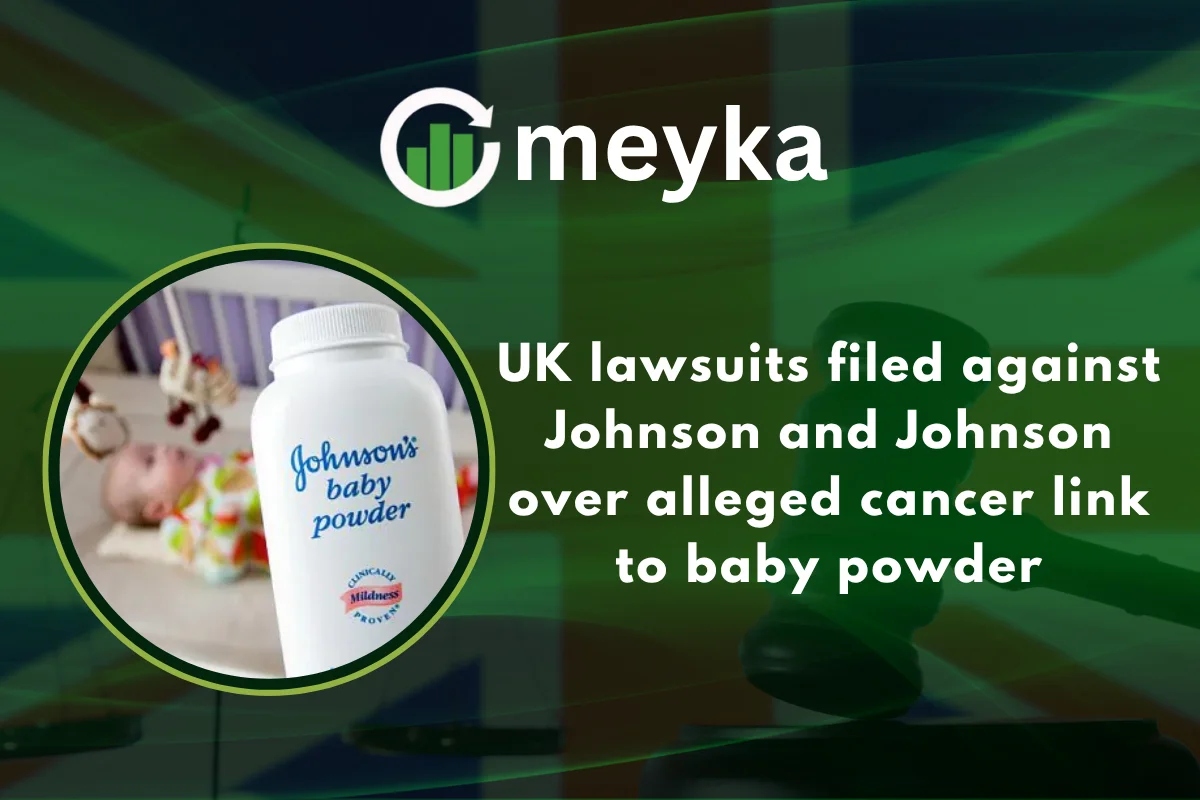UK Lawsuits Filed Against Johnson and Johnson Over Alleged Cancer Link to Baby Powder
The legal storm over talc-based baby powder and cancer risk has crossed the Atlantic; the United Kingdom has now become the battleground for claims against Johnson and Johnson. After years of litigation in the United States, more than 3,500 claimants in England and Wales have stepped forward, alleging that prolonged use of J&J’s baby powder products caused ovarian cancer, mesothelioma, and other diseases.
Background: Talc, Asbestos & Johnson and Johnson
Talc is a mineral widely used in cosmetic and personal care products to absorb moisture and reduce friction. However, talc deposits often exist in close geological proximity to asbestos. In some instances, talc mined for use in consumer items has been contaminated with asbestos fibers, a known carcinogen.
Over decades, plaintiffs have claimed that Johnson and Johnson failed to adequately test, monitor, or warn consumers that its baby powder could harbor asbestos, thereby increasing the risk of cancers such as ovarian cancer and mesothelioma. PMC
J&J consistently defended its product, asserting that its talc was safe, asbestos-free, and unconnected to cancer risk. Nevertheless, mounting jury verdicts in the U.S. and internal document disclosures created intensified scrutiny.
Why the UK Lawsuits Matter Now
1. First of Their Kind in the UK
Until recently, talc litigation centered predominantly in U.S. courts. In late 2024 and 2025, law firm KP Law formally submitted a pre-action letter to J&J on behalf of about 1,900 potential claimants in the UK. That group has since swelled to over 3,500. The High Court in London is expected to hear arguments under English tort law, marking the first major group action of this kind in England and Wales.
2. Mass Claims & High Stakes
The claims allege that J&J’s talc-based baby powder, sold in the UK until 2023, was contaminated with carcinogenic fibers and that the company had long-standing knowledge of the asbestos risk but chose to conceal it. Plaintiffs include women diagnosed with ovarian or peritoneal cancer and individuals suffering from mesothelioma.
KP Law has estimated the value of the UK lawsuit to be approximately £1 billion ($1.34 billion). Unlike U.S. cases decided by juries, UK civil matters are typically decided by judges, limiting the possibility for large punitive damages.
3. U.S. Litigation Context & Failed Bankruptcy Tactics
J&J has been embroiled in talc lawsuits in the U.S. for years; over 60,000 claims have been filed, alleging that its talc products caused cancer. To contain liability, the company attempted a controversial bankruptcy maneuver (a “Texas two-step”) via a subsidiary, with a proposed $10 billion settlement. However, U.S. federal courts repeatedly rejected these efforts, allowing plaintiffs to continue pursuing traditional litigation. In 2025, a U.S. judge rejected J&J’s $10 billion baby powder settlement plan yet again.
The failure of that strategy strengthens the case for UK plaintiffs seeking accountability under a different legal system.
4. Scientific Evidence & Regulatory Reassessment
In recent years, multiple scientific reviews and epidemiological studies have linked frequent perineal use of talc with increased ovarian cancer risk (30% to 60% higher, in some studies). The International Agency for Research on Cancer (IARC) has assessed talc as a “probable carcinogen” in its latest review. These findings add weight to claims that J&J should have sounded earlier warnings.
What to Expect Next
Legal Timeline & Strategy
- Formal group action proceedings will be set before the High Court in England and Wales.
- Claimants must prove that J&J owed a duty to warn consumers, breached that duty, and caused harm via its baby powder products.
- J&J (or its spin-off Kenvue, now responsible for talc liability outside North America) is likely to fight aggressively, disputing causation, product safety, and statute of limitations defenses.
- Unlike U.S. trials, UK judges decide cases. Even if exemplary damages are awarded, they tend to be modest.
Impacts for Consumers & Justice
- Individuals in the UK who used J&J’s talc-based baby powder and later developed ovarian cancer or mesothelioma may qualify to join the group action.
- A successful judgment could open the door to compensation for medical bills, lost earnings, and emotional damage.
- Even if the case is settled or won, J&J is unlikely to admit wrongdoing publicly.
Investor & Market Implications
As the litigation intensifies, Johnson and Johnson’s obligations may impact investor perception. Observers in the stock market and those following AI stocks or biotech trends may see this as a test of liability risk for consumer brands in the era of increased scrutiny. A large adverse judgment or settlement could weigh on J&J’s brand reputation and financials.
While J&J has set aside billions for U.S. talc claims, the UK case adds uncertainty to its global liability posture. As such, prudent investors may monitor legal disclosures, liability reserves, and potential write-downs associated with this litigation.
Conclusion
The UK lawsuits against Johnson and Johnson mark a pivotal chapter in the global battle over the allegedly carcinogenic risks of talc-based baby powder. Thousands of claimants allege that J&J knowingly sold asbestos-tainted products without warning consumers. The English High Court is now at the center of this legal battle. Scientific evidence and regulatory assessments continue to shape the arguments on both sides. This case could ultimately redefine accountability standards for global consumer healthcare companies.
FAQ
No. J&J maintains that its talc-based products were safe, did not contain asbestos, and did not cause cancer. The company continues to contest liability in court.
J&J ceased the sale of talc-based baby powder in the United States in 2020 and ended UK sales in 2023, transitioning to cornstarch-based formulations.
These group actions can take several years through litigation, judgment, and possible appeals. The initial trial phase may begin in the next few years, with full resolution possibly taking 4–5 years or more.
No. This legal action is limited to England and Wales and is governed by English civil law. Claimants from other jurisdictions typically pursue their own local or U.S.-based claims.
Disclaimer:
This content is made for learning only. It is not meant to give financial advice. Always check the facts yourself. Financial decisions need detailed research.






